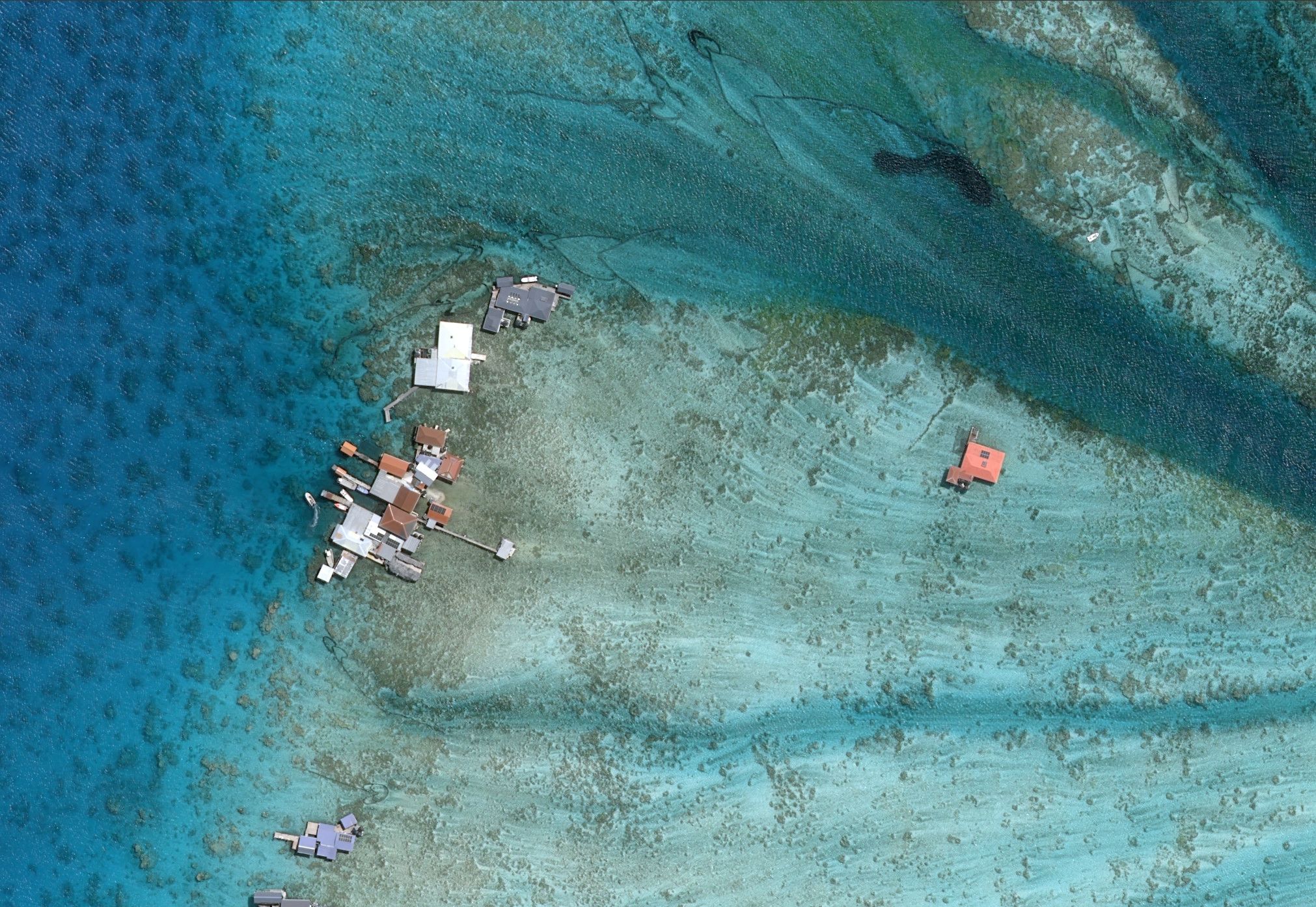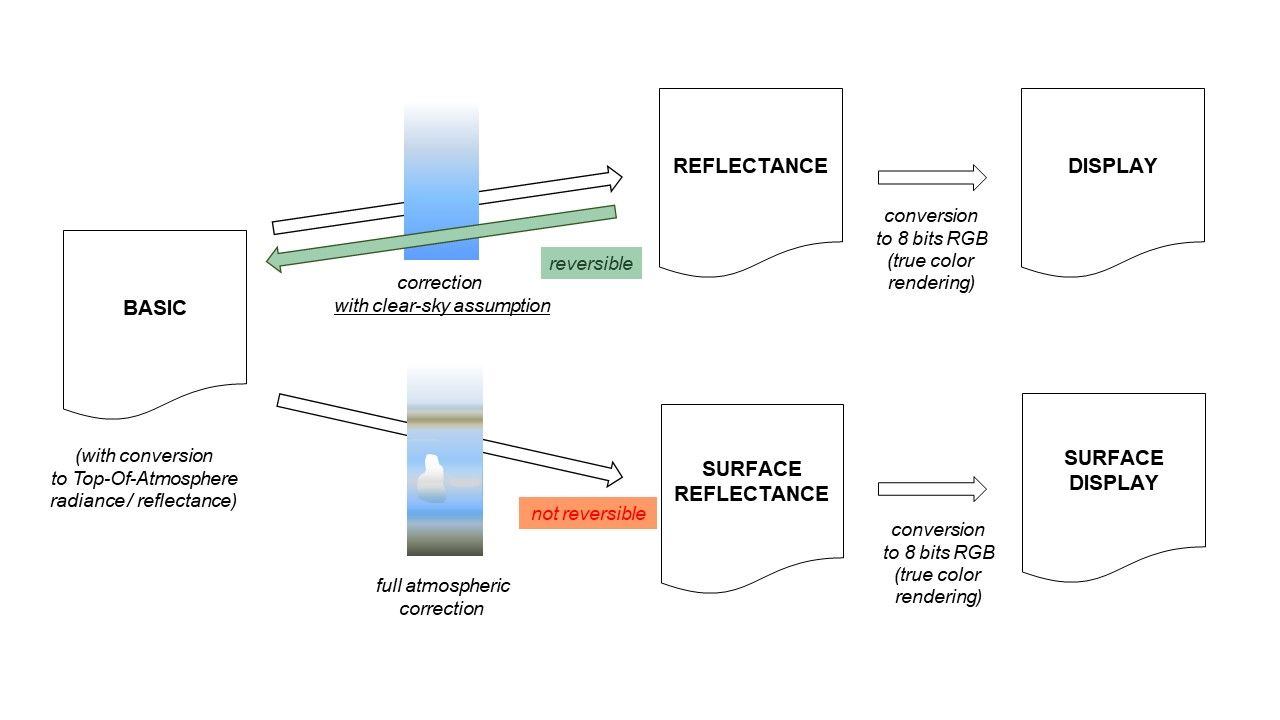
Home
Our Expert's Answers
Dehazing Optimal Clarity for E...
Atmospheric Correction and Dehazing: Optimal Clarity for Enhanced Satellite Imagery
Satellite images are often impacted by atmospheric conditions such as haze, pollution, or cloud veils, which degrade image quality and complicate interpretation, analysis, and the visual consistency of coverage and basemaps. The dehazing processing option provides an advanced atmospheric correction solution, restoring clarity and enhancing the usability of satellite imagery across diverse environments.

Schematic view of the atmosphere
Atmospheric correction explained: The key to high-quality imagery
The atmosphere contains various elements that affect satellite image capture:
- Atmospheric molecules scatter light, creating a blue halo around Earth when viewed from space.
- Clouds, including thin cloud veils, obscure details and reduce image sharpness.
- Aerosols, found mainly in the first two kilometres of the atmosphere, closest to the ground, include urban pollution, sea salt aerosols, and wildfire smoke.
- Sand veils, present in arid regions, result from wind erosion and can significantly obscure ground details.
Unlike molecular scattering, which is stable and predictable, these atmospheric effects vary in both space and time. To achieve high-quality imagery, an adaptive and advanced correction method is required to reconstruct a true representation of the surface.
How does dehazing work?
Our dehazing solution is based on a fully model-driven approach, combining:
- An atmospheric model, accounting for varying atmospheric components and conditions.
- A scene model, integrating landscape characteristics such as vegetation, soil, and water.
- An autonomous correction process, where the algorithm determines atmospheric parameters and applies spatially adaptive corrections.

Scheme explanation of how Airbus atmospheric correction processing works
This methodology results in high-accuracy Surface Reflectance images that are corrected for atmospheric effects and ready for analysis. Additionally, the Surface Display product enhances image rendering, offering a visually optimized representation for easier interpretation and communication.

Images before (left) and after (right) the Surface Display correction applied in a case of pollution
Expanding the possibilities of atmospheric correction: New radiometric formats
- Surface reflectance: This processing method fully corrects atmospheric effects, including aerosols, thin clouds, and sand veils, ensuring an accurate representation of surface conditions. Unlike traditional reflectance products that assume clear-sky conditions, this correction is fully spatialized, dynamically adapting to atmospheric variability across the scene. It delivers true ground-level reflectance, except in areas covered by thick clouds.
- Surface display: Designed for optimal image visualization, Surface Display is an 8-bit conversion of the Surface Reflectance product. It applies full atmospheric correction while enhancing colour rendering in RGB bands, providing an intuitive and visually compelling representation of the scene.
These processing options ensure greater accuracy, usability, and visual clarity, making satellite imagery more valuable for applications such as environmental monitoring, urban planning, and large-scale mapping.

Images before (left) and after (right) the Surface Display correction applied in a case of tropical haze
- Adaptive and accurate atmospheric correction: Unlike previous methods assuming clear skies, our advanced approach dynamically adapts to spatial and temporal atmospheric variability, ensuring reliable data.
- Ready-to-use data for seamless analysis: Surface reflectance products allow users to apply vegetation indices and land cover classification without the need for additional atmospheric correction.
- Superior visual quality: Surface display delivers sharper and more vibrant imagery, enhancing visual interpretation and communication.
- Compatible with multiple satellite sensors: Dehazing is designed to support multiple sensors, including Pléiades Neo, ensuring broad applicability across remote sensing projects.
Since 2021, our Dehazing algorithm has been integrated into the Global Basemap, ensuring dehazed and consistent imagery on a global scale. This patented technology has undergone extensive real-world validation, including the processing of over 500,000 Sentinel-2 images, each individually corrected for atmospheric effects.
This innovation represents a major advancement in satellite image quality, delivering analysis-ready data optimized for geospatial professionals, researchers, and remote sensing analysts. It also enables the production of higher-level products, such as large mosaics of very high-resolution images, ensuring continuous improvements in image clarity and usability.
Before correction
After dehazing correction
Dehazing correction applied to an image over Bangalore
Did you find what you were looking for?
Speaking with the Airbus team is the best way to get started.

